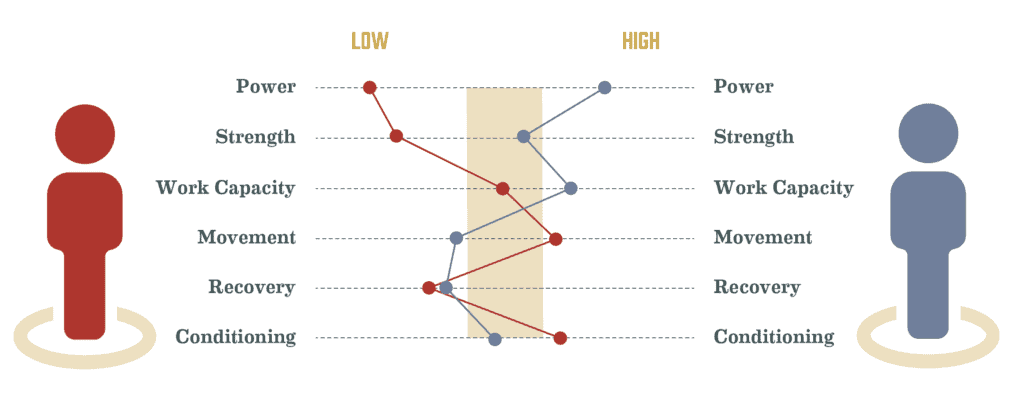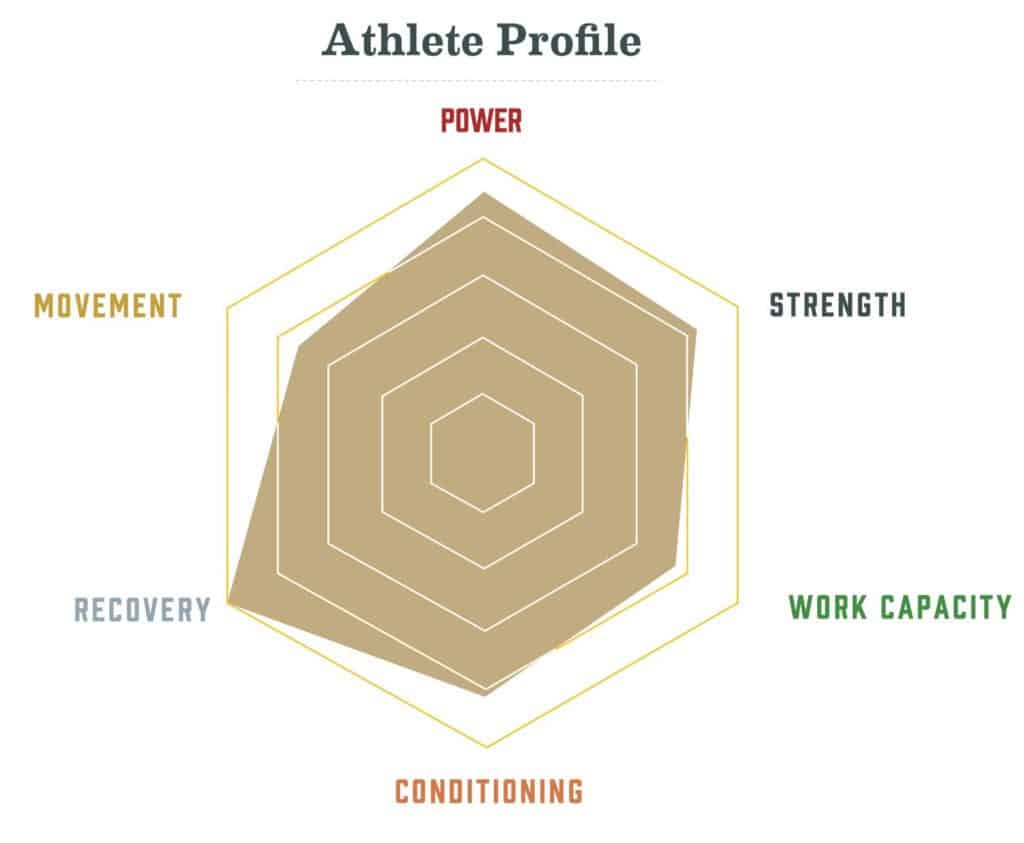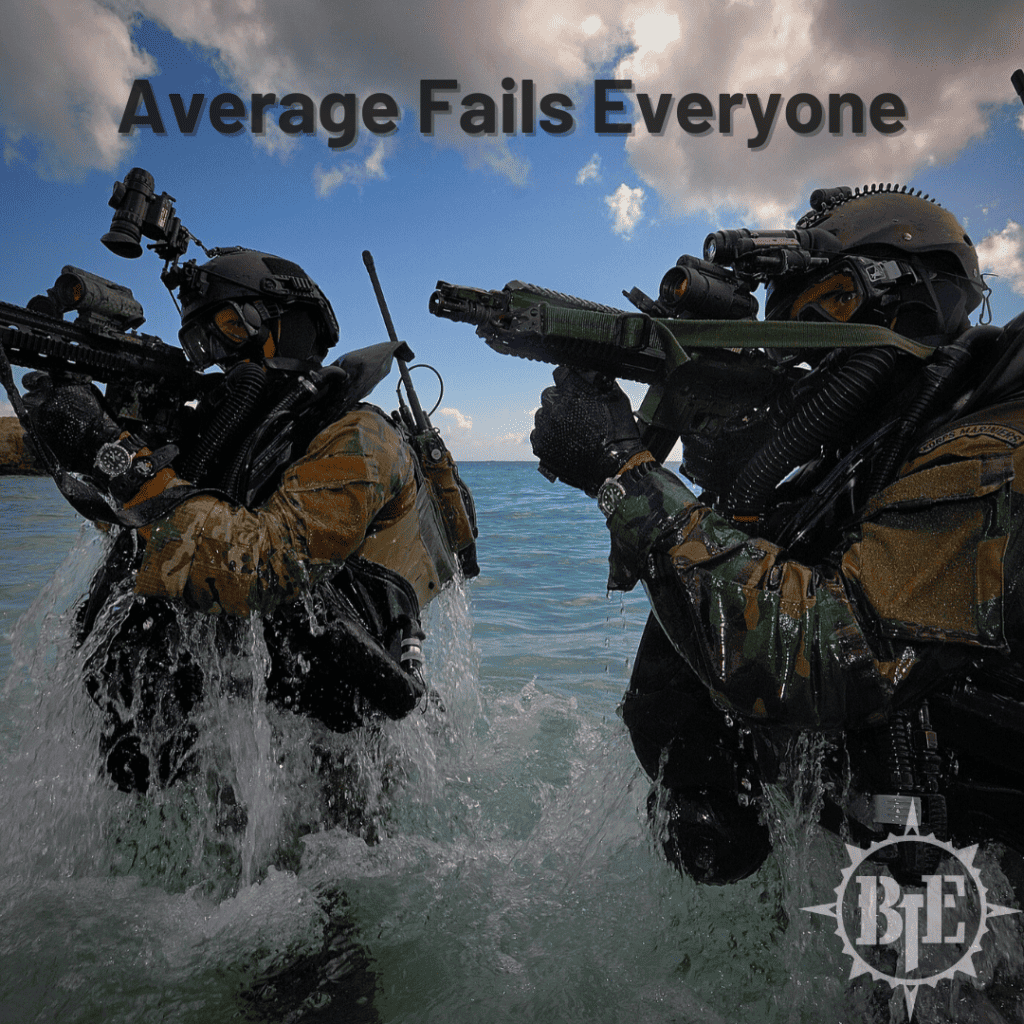Military aircraft technology evolved rapidly in the years after World War 2. With the introduction of jet engines, planes became much more powerful and complicated. They also became alarmingly easier to crash. On many days the Air Force recorded over a dozen different crashes at bases around the country. Seventeen pilots crashed in a single day in February of 1950.
Post-crash analysis failed to find a mechanical reason for the crashes. Initially, the Air Force blamed human error. But, the pilots knew their aircraft well, and never showed any signs of mistakes in testing. The human error theory didn’t hold up.
This led to a closer look at the design of the cockpits in the planes, and the assumptions upon which they were built. Back in 1926, engineers measured the body sizes of hundreds of pilots and combined them into a single average. That average determined the ergonomics of everything in the cockpit, from the shape of the seat to the distances to the pedals and stick.
Average, but better?
Researchers wondered if the initial averages were off, or if pilots had gotten bigger since 1926. So they set out to create a new, better average. They measured 4,000 pilots on 140 different dimensions. This included obvious things like height and weight. They recorded all the measures you’d expect a tailor to need, like chest circumference and inseam. They also measured dozens of smaller things like the length of each finger and the distance from the pilots’ eye to their ear.
One of the scientists on this project was skeptical of this project’s premise. He had done similar research as an undergraduate at Harvard. Lieutenant Gilbert Daniels had measured the hands of 250 fellow students and then compared each person to the averaged dimensions. They were similar people, but the sizes of their hands were unique. None of the individuals’ hands fit the size and shape of the average hand. The average was no better a match for an individual than the measurements of a random person pulled off the street.
“When I left Harvard,” he said, “it was clear to me that if you wanted to design something for an individual human being, the average was completely useless.”
Daniels did the same test with the Air Force pilot data. With the data from 4,063 pilots, he took the ten dimensions thought to be most important for cockpit design – things like height and arm length. He ran the numbers so that anyone within 30% of the range of values for each dimension was considered “average.” This provided a wide range. For example, the average height in the study was 5’9”, but the 30% range meant that anyone two inches taller or shorter than that was also considered to be within the average.
As he had done at Harvard, Daniels then compared each individual pilot to the average. The scientists expected that most pilots would be average in the majority of the dimensions. They assumed that quite a few of them would also be within the average range for all ten dimensions.
So, how many pilots were truly “average” and fit within all ten dimensions?
None. Not a single person out of over 4,000 people.
Some pilots fell within the average range on a dimension or two. They might have “average” height, but then they wouldn’t be within the average for leg length, chest circumference, or any of the other measures.
They tried to narrow the data down and see how many pilots would fit within the average if they only used three dimensions. It was less than 3.5% of them.
The conclusion was clear. A cockpit designed to fit the “average” pilot would in reality fit nobody.
Planes weren’t crashing because cockpits weren’t designed with a good enough average. They were crashing because the one-size-fits-all design didn’t fit anyone.
A system meant to fit anyone, in fact, failed everyone.
The solution to this seems pretty obvious in retrospect. After Daniels published his findings, the Air Force went from trying to fit the pilots to the plane (building average-sized cockpits and then putting average-sized pilots in them), to making the planes adjustable to fit individual pilots. Like the adjustable seats and mirrors we take for granted in cars, the planes were designed so that the cockpits could be adapted to each pilot.
This principle is visible in many different areas, from the non-existence of an “average” female body type to the uselessness of an “average” coffee order, Spotify playlist, or Netflix lineup. There is no average that applies fully to an individual.
Keep this in mind the next time you’re in a gym, elevator, or coffee shop and find yourself annoyed by the music in the background. Everyone finds most of it to be unenjoyable because it’s meant to be acceptable to the “average” person, who doesn’t exist. 100 different people will prefer 100 different playlists. If you average out those preferences, you create something that nobody likes. Only by creating systems capable of adapting to the individual can we produce something that works well for a broad range of people.
This is as true for pilots as it is for special operators and the people trying to become one. There is no “average” one-size-fits-all template that can reliably prepare someone for programs like BUD/S, SAS selection, or SFAS.
Not every pilot flying a plane fitted to an “average” body size crashed, and not every person who follows a generic SOF prep program fails their course. But many of them did, and do. The ones who manage to make it work are statistical outliers, surviving against needlessly steep odds.
This is part of the reason the attrition rates in SOF selection programs are so high. 1950s pilots didn’t crash a dozen planes a day because they were bad pilots, and modern SOF selection candidates facing attrition rates ranging from 60 to 90% aren’t unmotivated weaklings. They’re struggling to work with aircraft and prep programs that aren’t designed to work with them.
As soon as we’re dealing with individuals, the average becomes useless as a frame of reference. But it’s alluring. Thinking in averages creates an illusion of knowledge. It allows us to rest easy, comforted by the fact that a simple generalization tells us most of what we think we need to know. This comfort is false and dangerous. The moment we look closely at an individual, we realize that blanketing them in an assumption of average-ness also causes us to overlook what is most unique and important about them and their developmental path.
Culturally, we fall into this trap all the time. We assume that a certain GPA will guarantee success in college or in a career afterward. We believe that a specific type of resume will ensure that somebody will do well in a job. We think that we can predict who will make a good special operator based on their PT test scores.
In reality, none of these things capture the differences between individuals that matter. On average, we can make very loose assumptions from these pieces of information, but these generalizations mean almost nothing when it comes to the performance or potential of an individual person.
This is why when we set out to write a book about developing resilient special operators, we spent most of a decade making a 538-page textbook instead of a generic pdf program. Without understanding the complexity of training for the special operations environment and how to assess an individual’s unique profile within that context, you can’t create a program that fits anyone well.
While everyone faces the same demands in a given SOF selection course, they are doing so as individuals, with unique strengths, weaknesses, and limiting factors.
Just like pilots and cockpits, two seemingly “average” SOF candidates will have unique personal profiles.
This variability within individuals is known as jaggedness.
We cannot apply one-dimensional thinking to something that is complex and “jagged.” This jaggedness describes the many facets that make up a quality, such as the profile of a special operator. It could also describe almost any other human characteristic, like intelligence or character.
An IQ score, for example, is an attempt at describing the nebulous concept of human intelligence with a single number. But, if we think about what makes a person intelligent, we could think of many areas in which two people with similar IQs would be different.
These are the jagged profiles of the physical performances of two special operations candidates. On the surface, you could call each of them an “average” candidate. If you lumped all of their unique characteristics into a single metric, they would look very similar. But the reality is much different.

There is no “average” SOF candidate.
As you can see, there is no “average” SOF candidate any more than there is an “average-sized” pilot. Each of these candidates has different strengths and weaknesses and will need a different approach in their training to succeed in selection. A program meant for one of them would not fit the other, and a program meant for the average between the two of them would fail both of them.
We have built this fact into our training app as well. When you start with the app, you’re not given a generic one-size-fits-none program that you’re forced to fit to yourself. Instead, you go through an assessment that creates your own unique profile. This is what the profile for physical performance looks like:

Even this profile features some additional layers of variability. For example, one person may test their maximal strength with a barbell back squat, where another person may feel better pulling a heavy deadlift. Either measure is an adequate reflection of maximal strength as it applies to SOF selection. People can take different roads to the same destination.
Further, this particular profile is only measuring physical characteristics. There are at least as many variables on the mental side that affect someone’s performance.
One person may be great at segmenting and managing their self-talk but struggle with maintaining a growth mindset during challenges and setbacks. Another person might have a great growth mindset, but lose motivation and catastrophize things once they encounter ambiguity in open-ended workouts.
Like the example of physical jaggedness, every individual has a unique fingerprint of mental and emotional skills. This individual profile affects how they interact with their program over time, and what limiting factors they need to address in their training.
People also vary in the time domain. They learn, recover, and adapt at different rates. Even if two people start with similar physical profiles, they may take different paths from there as life throws different curveballs at them and their individual backgrounds influence their rates of progress in different domains.
This means that any program must also be adaptable from day to day. Just as any good coach makes regular adjustments to a client’s program based on how they’re recovering and adapting, our training app accounts for daily fluctuations in sleep, nutrition, and stress levels to automatically adjust the program based on trends in adaptability.
Programs must also be adaptable by the user.
For example, one person may have access to a fully-equipped gym, while another may be deployed overseas with a limited range of equipment, or working out from home. Whether you’re training with barbells, dumbbells, or mostly bodyweight movements doesn’t really matter, but what does matter is that you’re able to choose the equipment layout that fits your needs on any given day and continue with your program regardless of your travel schedule. This is another layer of variability that we’ve built into our app.
Weekly schedules also fluctuate, and a program that can’t adapt to a changing calendar can also create problems. Creating a program for an “average” week is only useful until a real person with a real life starts doing it. Our app allows you to adjust the workouts in your program to fit your schedule and make adjustments as you go.
Average fails everyone.
There is no such thing as an average training program or an average person. A generic program designed for everyone is in fact ideal for no one.
An effective program must be designed to fit the individual that it’s created for and to adapt to meet that person’s changing needs over time.
Air Force pilots dramatically improved their flight safety and performance once they were able to fit their cockpits to their own unique needs rather than trying to work with a rigid design built for an imaginary average person.
In the same way, SOF candidates who prepare for their courses using programs designed specifically for their unique profiles are able to work with their individual strengths and weaknesses, improve their limiting factors, avoid needless injuries, and give themselves the best possible chance of success.
Note: For further reading on the concept of jaggedness, we strongly recommend The End of Average by Todd Rose.




This is great information. Are those individuals selecting SO’s using this philosophy or NOT?
It’s not so much something that’s consciously applied as part of an explicit process as just how a complex system naturally works. If you think of it in a different domain, two people might both be good entrepreneurs, or good employees, or good hockey players, and excel in their fields through attributes that are unique to them.
The people who make it through a SOF selection course seem pretty similar on the surface, but if you look more closely at all of the variables within their profiles (different physical capacities, personality traits, mental skills, etc) you will find a high degree of jaggedness. Everyone has a different mix of physical characteristics, strengths, and weaknesses. Sort of like different keys that all open the same door.
There are still universal requirements, of course. Everyone who makes it through meets certain criteria like relatively high conscientiousness, low neuroticism, and the physical ability to meet the minimal physical standards in the course. But above those minimum thresholds, there is a high degree of interpersonal variability. Thus, the preparation programs that help each individual must be tailored to their personal limiting factors and needs. There is no one-size-fits-all program that produces results significantly above the statistical base rate because there is no individual who truly matches a statistical average.
Great article, looking forward to the app ????
Great article. I really wish I would have had this info in my selections. Particularly my Ranger Indoc program. I am past the age of military service now, but I’m really looking forward to applying what I’m learning in the book and what is to come in the app to my personal life and my business.
Keep up the outstanding work.